Our Latest News- July 18, 2024
Lixouri Field Station
It has been a record-breaking two weeks in Lixouri as the team have recorded 185 new emergences, which is just over half the total number of emergences recorded last year. 36 of these emergences were nests, bringing the current total nest count to 132, the highest number ever recorded for the Lixouri field station! 27 of these new nests have been relocated, many of which were due to turtles nesting between sunbeds, which is a big issue on several of our nesting beaches. On Megas Lakkos beach alone, 57 nests have been laid, which is yet another record for the team.
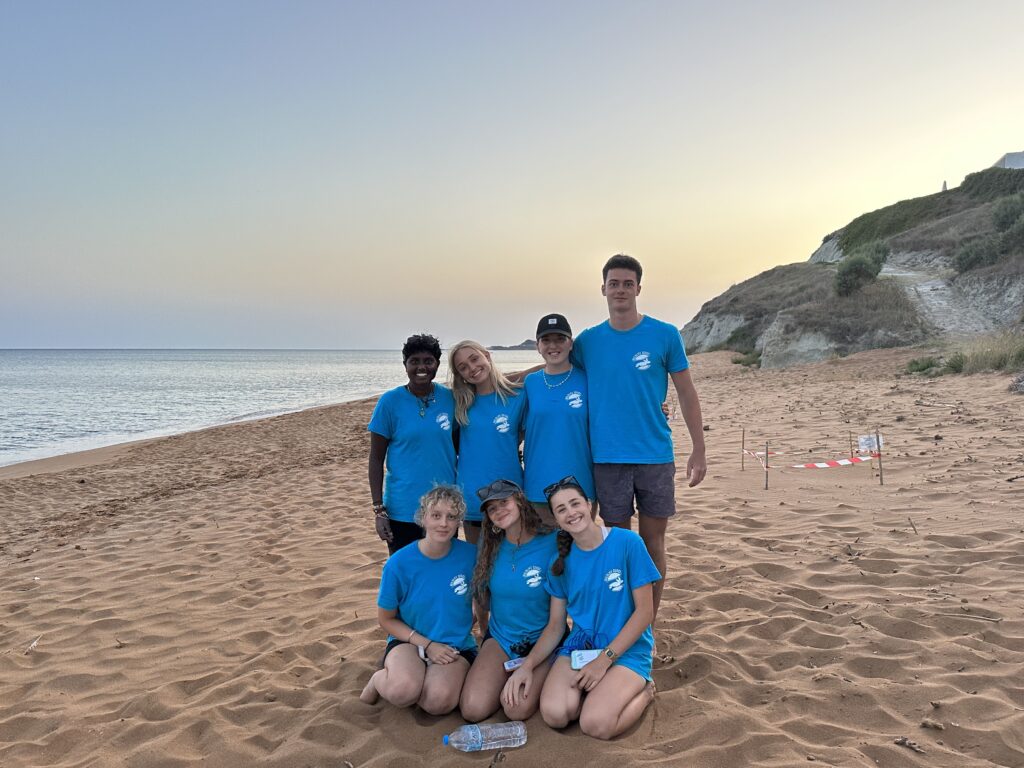
On night surveys, the team have seen a total of 40 different nesting females on Megas Lakkos beach, 5 of which were newly tagged during the past couple of weeks. Nesting females Fortuna and Gilleni have returned to lay their third and fourth clutch respectively, and the team are intrigued to see whether Gilleni will return to lay a fifth clutch of the season. During a morning survey on Vasta Beach, a group of volunteers were fortunate enough to see a nesting female camouflaging her nest. The night survey team were then able to tag, measure and take photo ID shots of this individual.
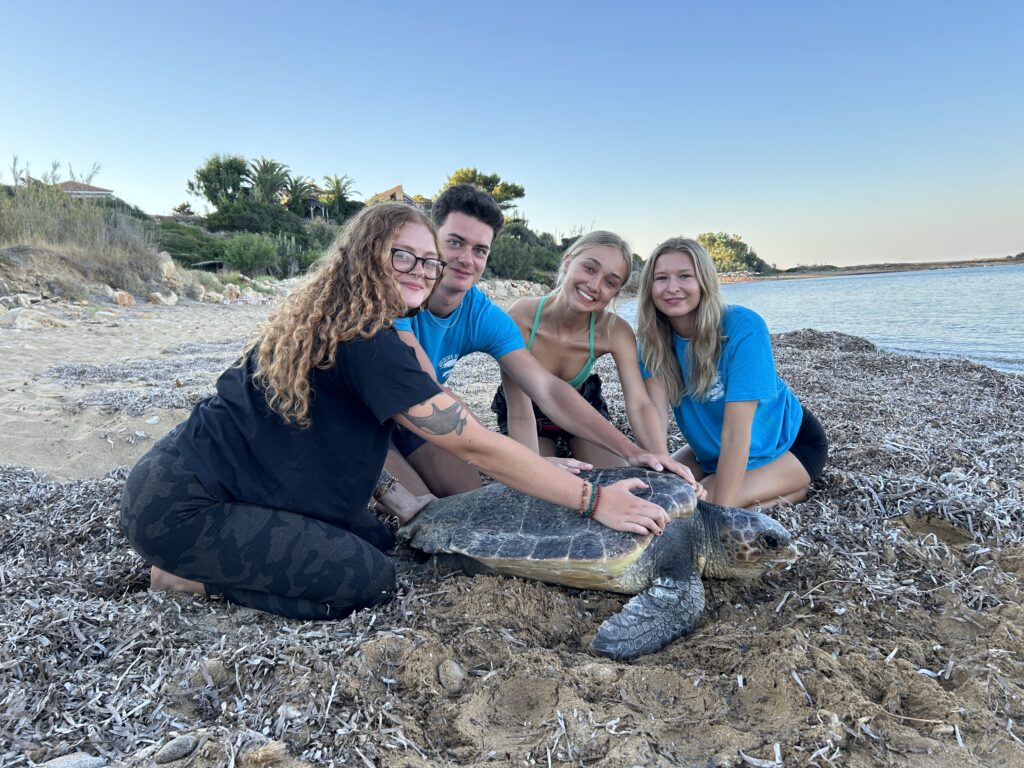
On the 10th of July, the first nest of the season began to hatch, with 19 hatchlings making their way to sea during the night. Since then, two other nests have also begun to hatch, adding to the excitement of morning surveys. Once these nests have finished hatching they will be excavated and inventoried to determine the hatching success rate of the clutch and developmental stages of any unhatched eggs. Besides these 3 nests, 9 other nests across our beaches have now hit the 45-day mark and so are due to start hatching any day now!
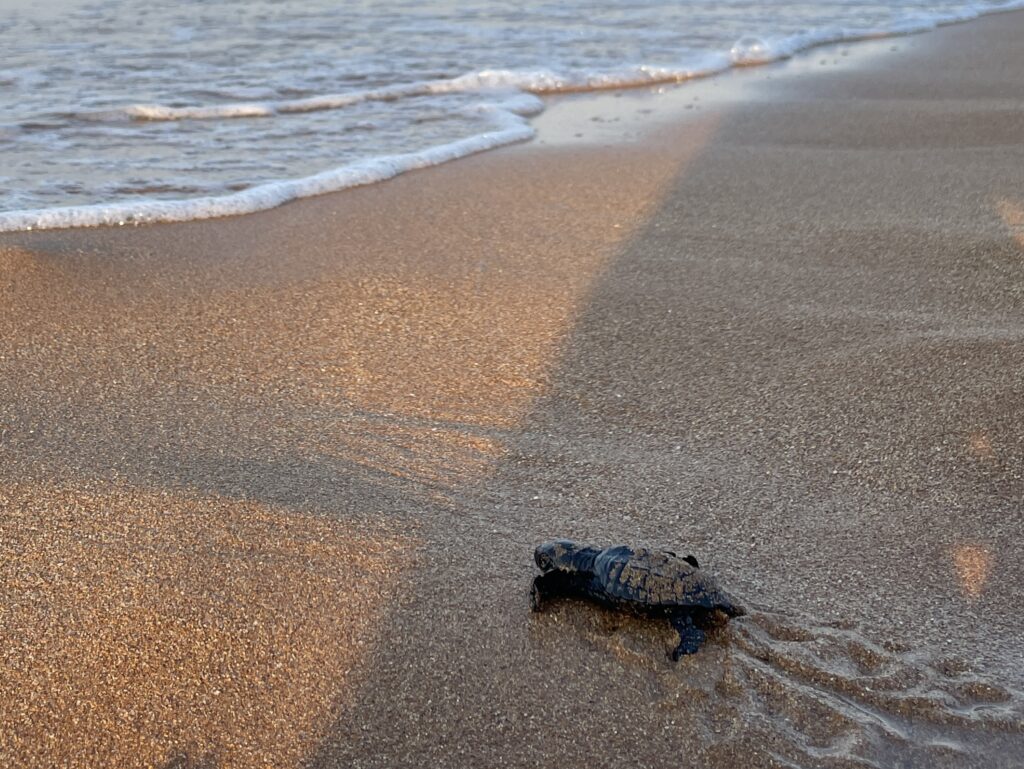
Argostoli Field Station
The time we have all been waiting for has finally arrived, with our first few nests hitting the 45-day mark! This means our hatchling rescue shifts have started, and we are hoping for our first hatchlings to arrive very soon! We can’t wait to see everyone’s hard work on morning survey shifts begin to pay off as our nests begin to hatch. Since our last update, we have had 214 emergences and 31 more nests bringing this season’s nest count to 99! Our volunteers have become experts at finding those precious eggs!
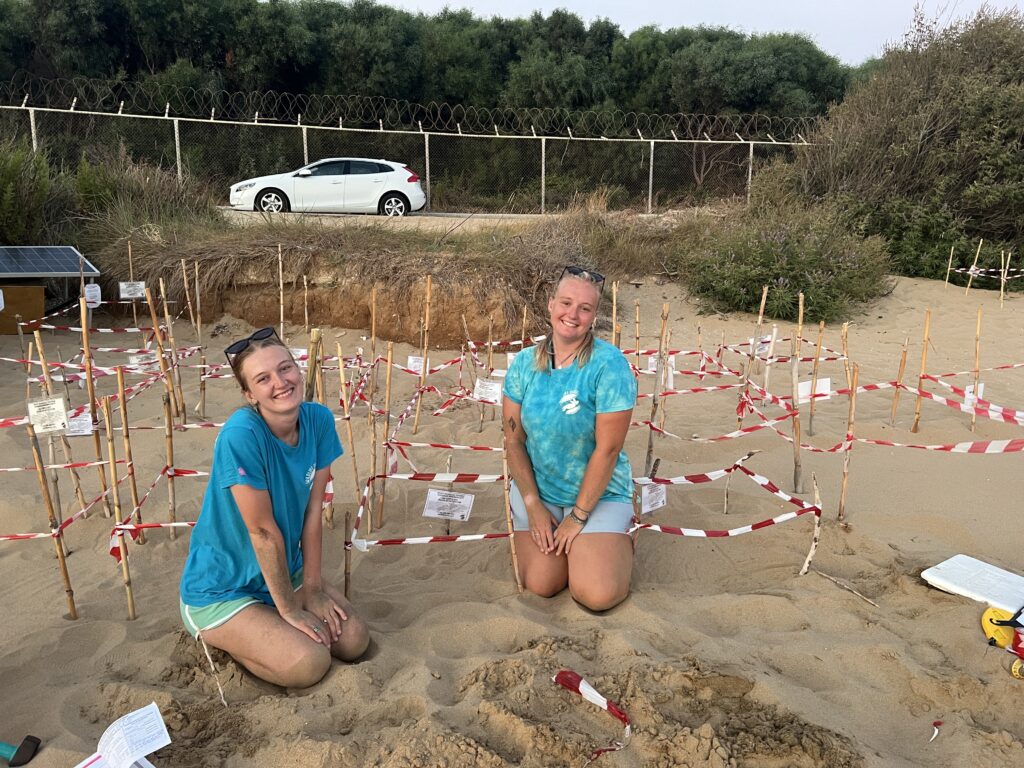
In 2023 we collaborated with the Octopus Foundation to place a camera in one of our relocated nests to help collect data and understand the development of an incubating nest. This week we have been able to recreate this and place a camera into one of our recently laid nests. We can’t wait to be able to see hatchlings emerge from their eggshells within the sand on livestream.
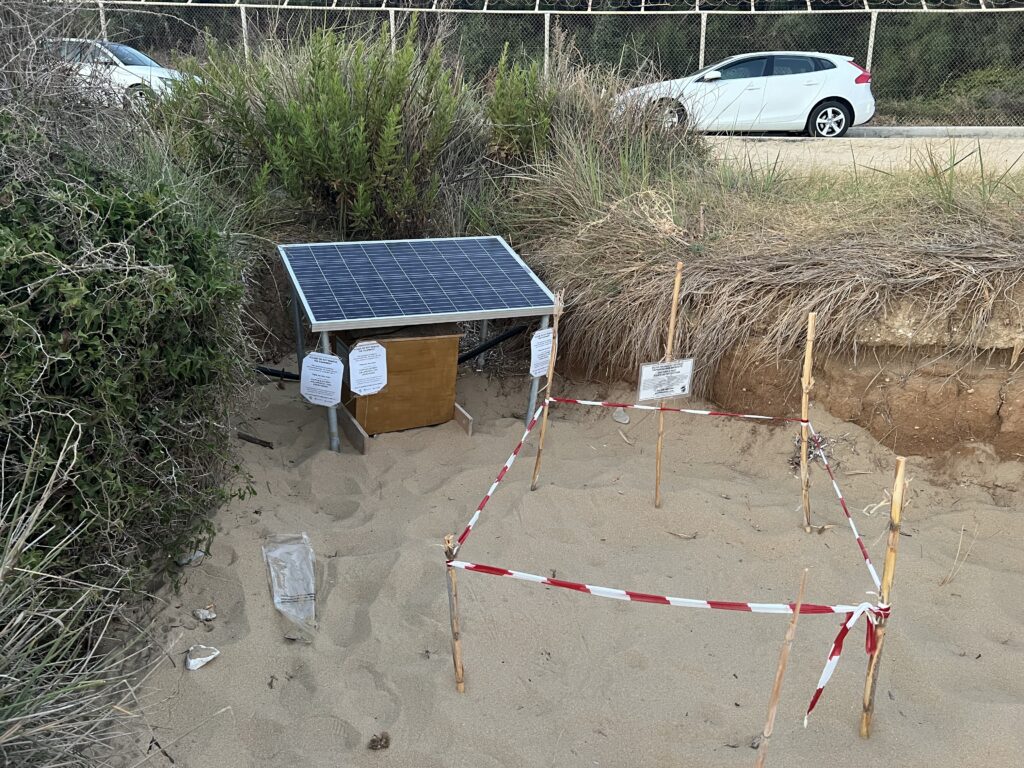
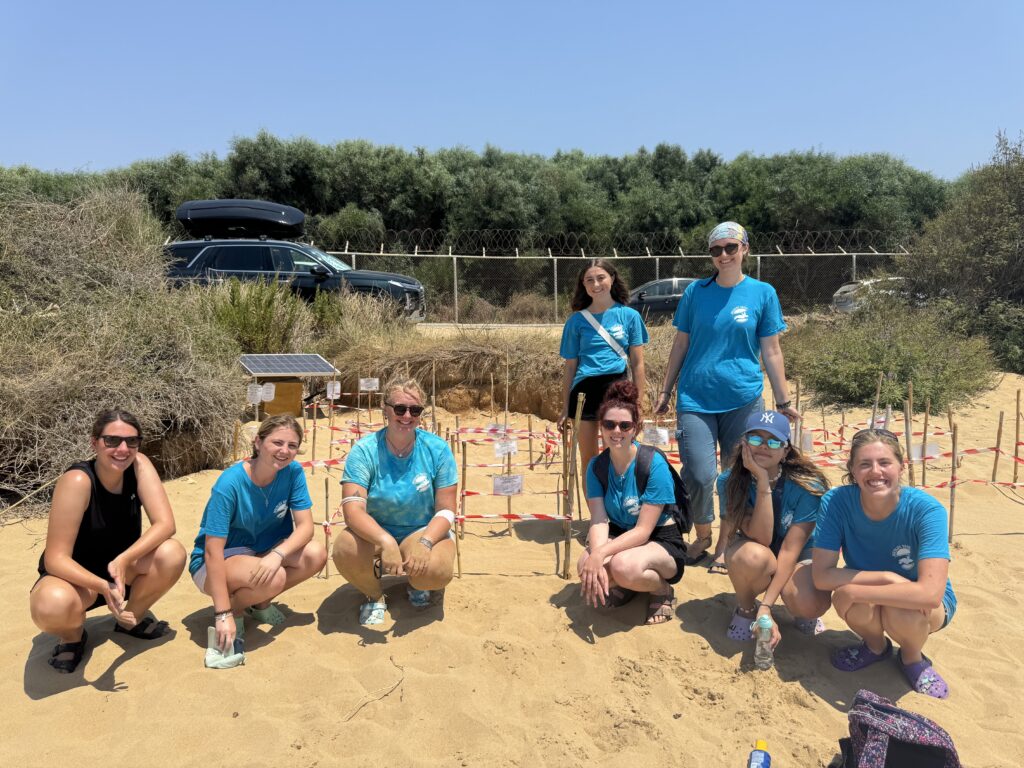
Some of our team have been super lucky to be visited by nesting females on their hatching rescue shifts. Veronica has returned and nested on Avithos beach after being tagged in 2021 on this same beach. The unknown females have now been tagged, microchipped and named. We can’t wait to see Veronica, Madimus and TayTay’s eggs hatch! Nesting females require specific conditions to be able to successfully lay their clutch. Sea turtles need dark beaches to nest and guide themselves to and from the sea. Factors including noise, light and movement will disturb and disorientate a female. After multiple failed nesting attempts, this can result in her fatally dropping eggs in the sea where they cannot survive. We strongly ask the public to stay off the nesting beaches and never approach a nesting turtle.
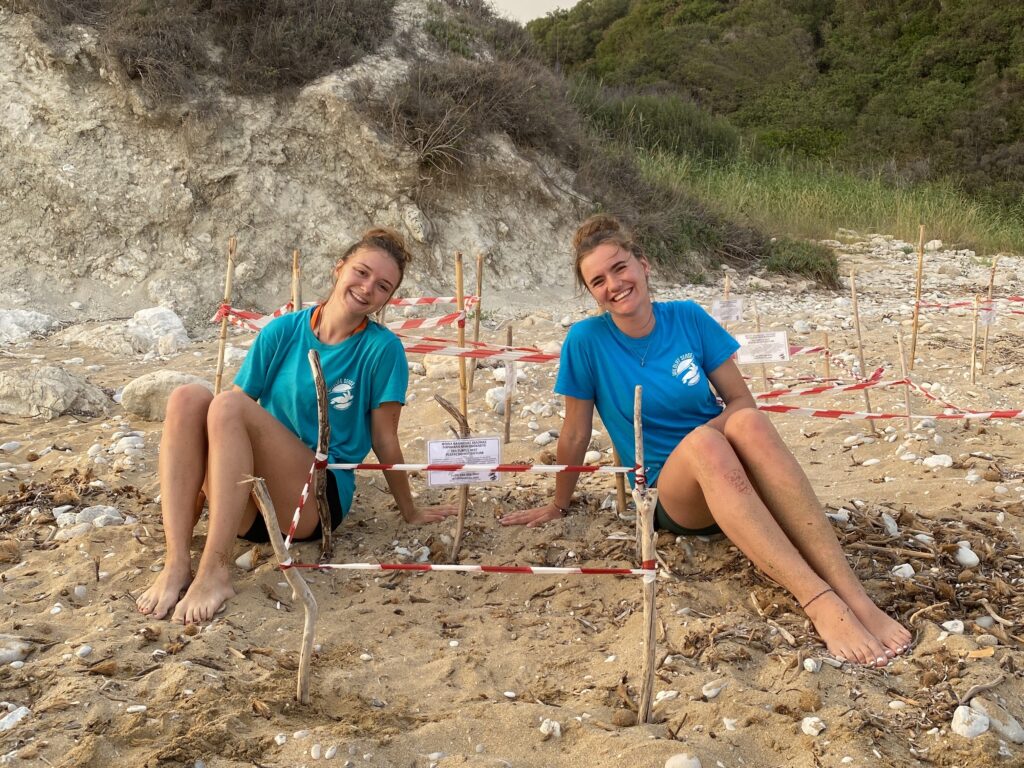
We would also like to wish Molly, one of our wonderful field assistants, all the best in her recovery from her appendectomy. We miss you Mols!
Skala Field Station
Many new records were set by the last group! They swam 14,4 km during their snorkel surveys and were able to map over 10000 photos of the seafloor, 15,4% of them being classified as having Posidonia in them. This group was particularly lucky to see over five turtles during their snorkelling surveys. They also set a record for the sand dune survey, completing 342 quadrats in only two weeks. All of them enjoyed our evening activities, especially gartic phone and sunset swim, during which they played an intense game of duck duck goose. Our volunteers used their free time to explore the island, on boat trips and bus tours, but also to watch every Euro football game in the Skala atmosphere.
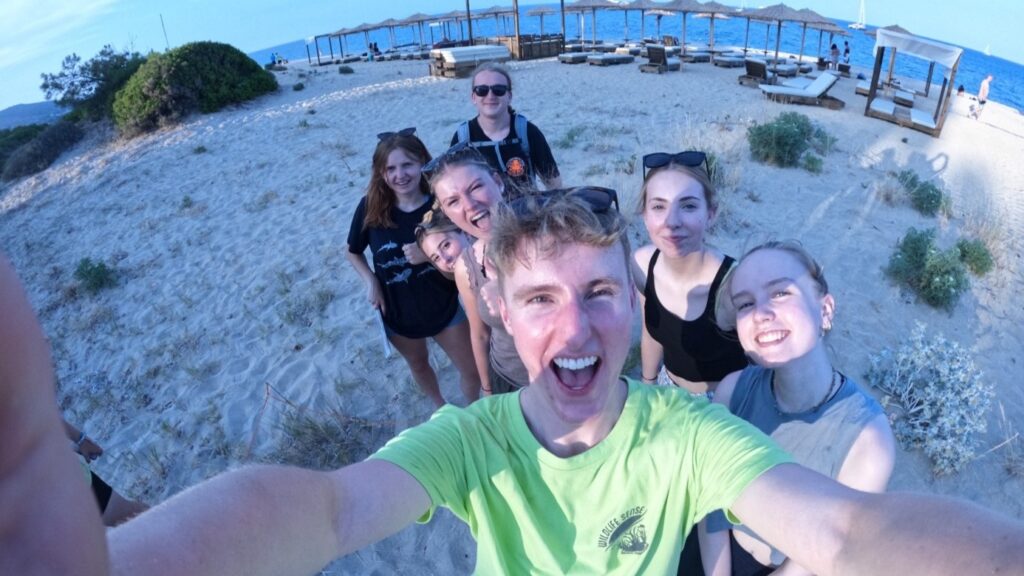
As we said goodbye to this group, we also had to say goodbye to our field leader and one of our field assistants.
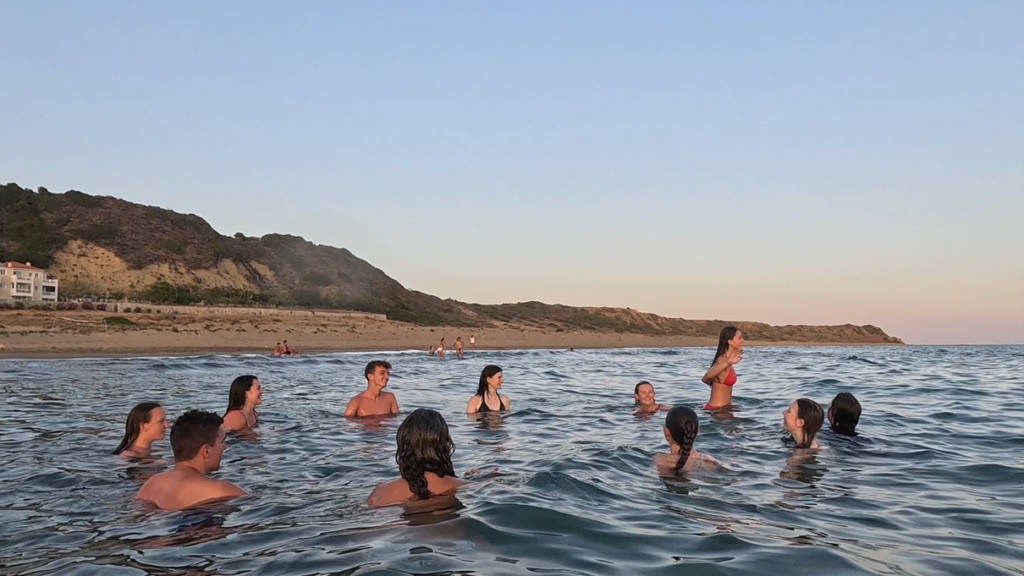
Our new group has made a strong start to their time here after two successful training days, during which they asked a lot of questions. They are now independently going out on shifts, collecting data for the project. Some of them were lucky enough to see a turtle and a ray on their first day here. They have continued to spot more species on their snorkelling shifts. After coming back from their shifts some of them already went down to Skala to try restaurants. They also were able to enjoy Greek food at the villa during our souvlaki night.
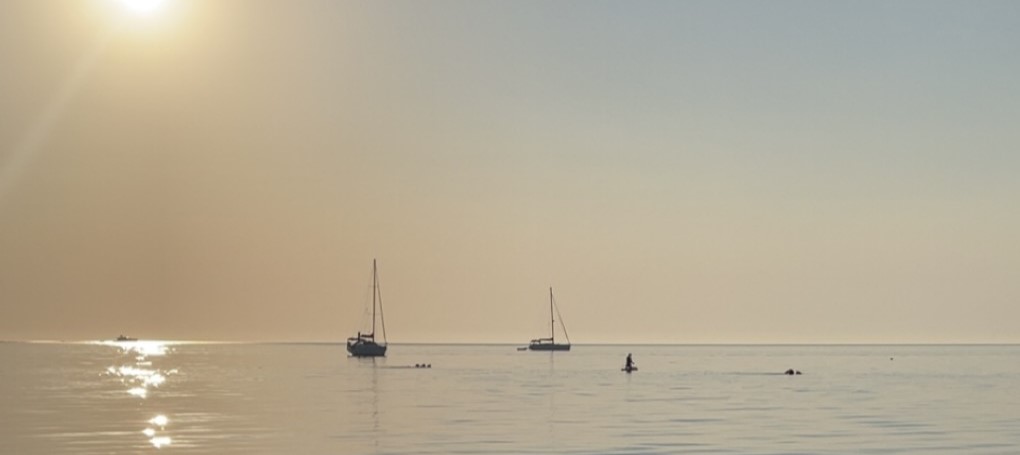
We introduced this group to the light pollution surveys, which consist of identifying the brightest and darkest areas on the beach. The main sources identified so far include street lights and restaurants. These have been enjoyed by our volunteers and continue to be a popular shift at the project.
Lourdas Field Station
We have now reached an incredible total of 50 nests in the Lourdas area! The past two weeks have been busy, with 12 nests and 9 relocations since July 7th. On Tuesday the 8th, we recorded 32 emergences, including 3 nests, and Thursday the 11th saw another impressive 20 emergences, also including 3 nests.
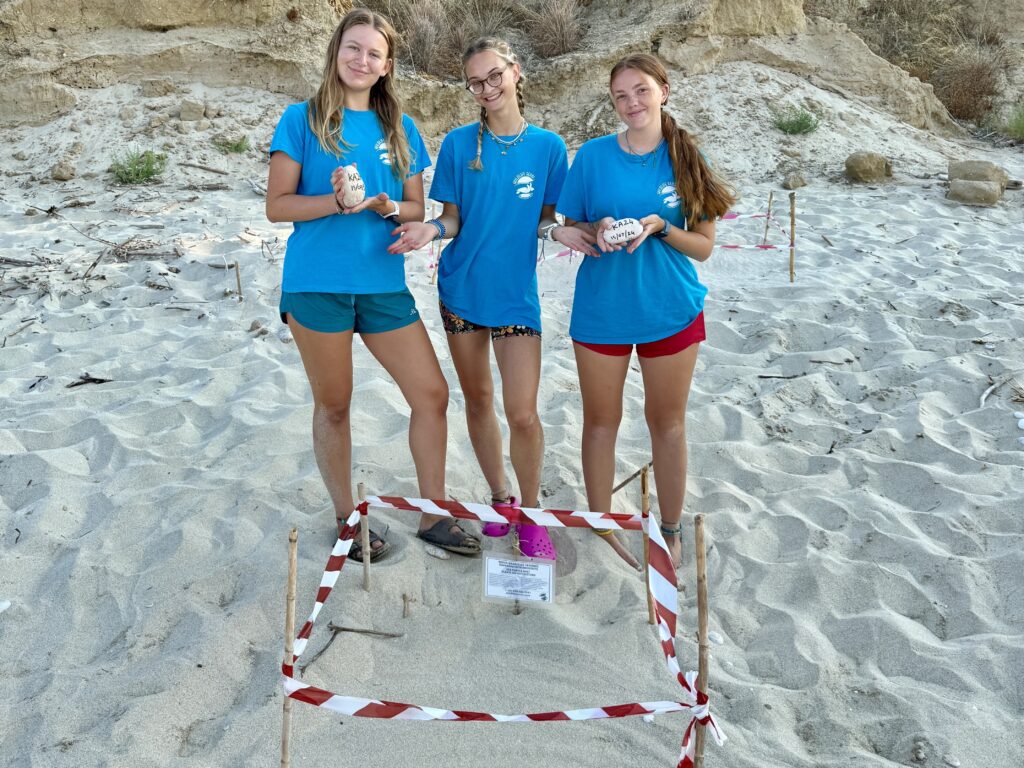
The tracks we’ve been recording recently have been particularly chaotic, with lots of non-attempts, abandoned egg chambers and several emergences overlapping, some featuring 2 or 3 tracks. Additionally, we had a few nest protections either partially or fully destroyed by emerging females, all of which we subsequently re-protected. One particularly challenging emergence involved a female knocking and moving all but one post of the nest protection. This track seemed suspicious initially, so we marked out an area to dig. Due to its proximity to the destroyed established nest protection, we were looking for not just one but two chambers—the original nest and a possible new one. After a few dig attempts, we found the original chamber, and no second chamber was located. This area was most likely a simple extended body pit created by the turtle while trying to find a suitable nesting area.
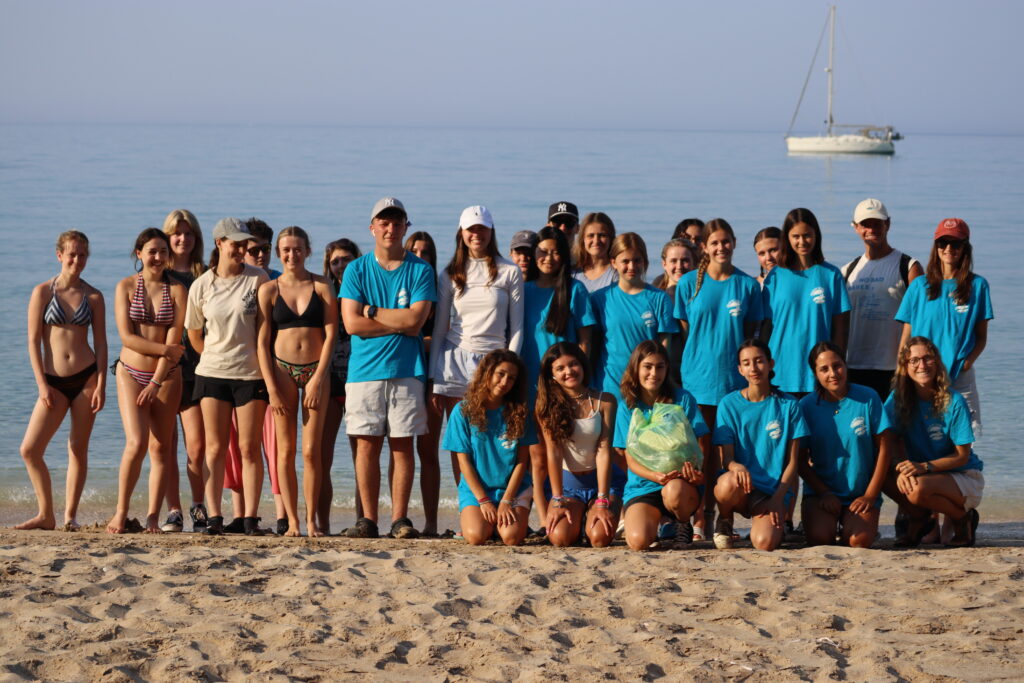
On our quieter mornings recently we have finished our surveys with a beach clean along Kanali and Trapezaki. Despite the few busy mornings earlier in the week, we suspect we are in the calm before the storm as we predict the activity to increase in the last few weeks of the nesting season.
Education Program Field Station
With our nesting beaches in full swing, our education program is thriving! Our students have been invaluable over the last two weeks, assisting with our extremely busy morning surveys. Some groups were fortunate enough to observe nest relocations and were very helpful in triangulating the nests. They also aided in our routine nest checks, ensuring that our nest protections and locations were in optimal condition to safeguard the egg chambers.
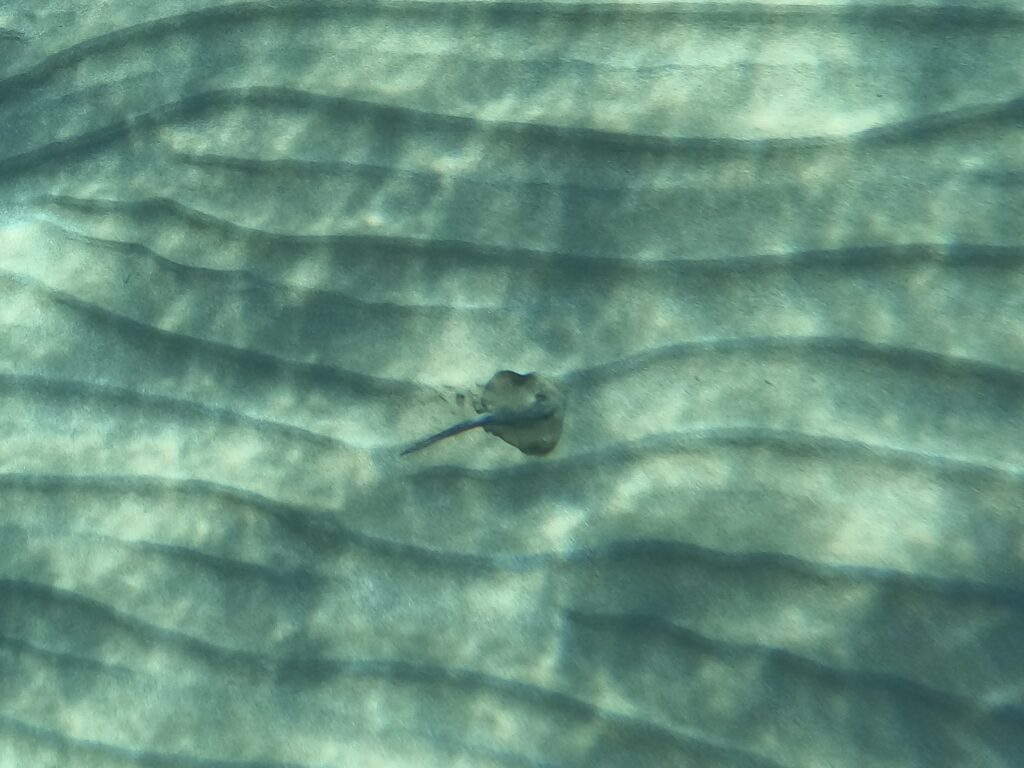
Our surveys of Argostoli Harbour have been very successful. Despite the heat, our students powered through, collecting invaluable data which was excellently recorded. During our harbour shifts, we collect data on turtle behaviour, from foraging events to interactions between different turtles and visual health checks on the individuals we encounter. A significant part of these shifts involved educating tourists about our local turtle populations. Our students eagerly engaged in these discussions, explaining the detrimental effects of feeding fish to the turtles. Alongside our harbour shifts in Argostoli, we completed coastal cleans in the adjacent lagoon and on Ammes Beach, where we impressively collected 898 pieces of individual litter, filling up 4 bin bags on Ammes Beach alone!
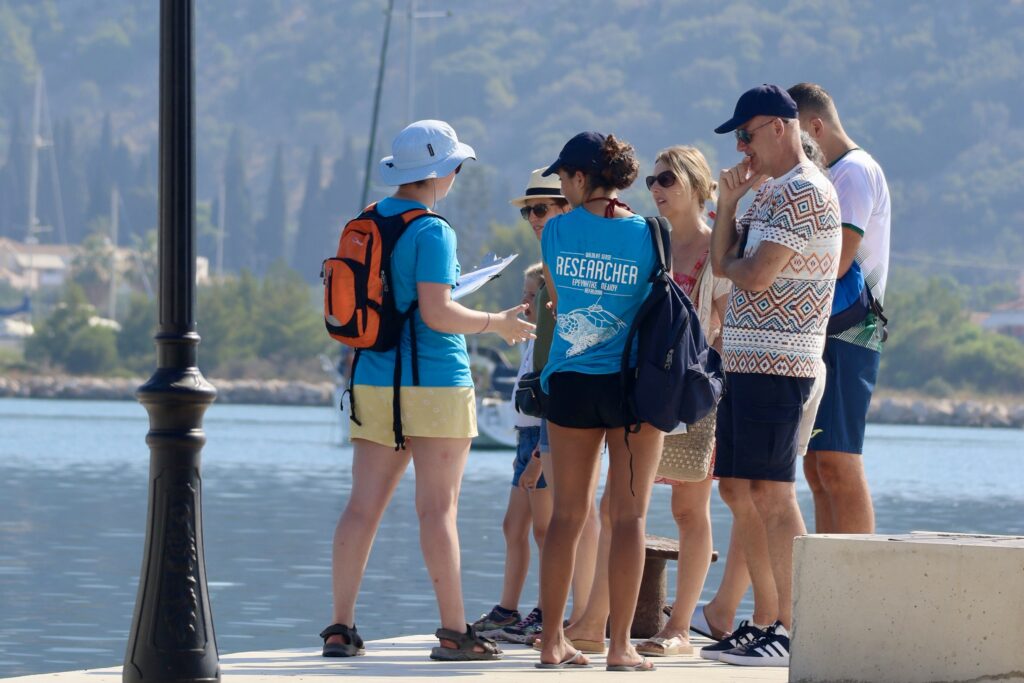
Despite some wavy conditions on certain days, our snorkel surveys have been progressing well, with our seafloor identification data maps expanding daily. Snorkelers on Ammes Beach had the delightful surprise of encountering a common eagle ray gracefully swimming along the sandy seabed, which they managed to capture on our GoPros. Rays feed on molluscs and crustaceans, both of which feed on corals and seagrass, making rays secondary consumers, which in turn makes them a key contributor to the protection of coral reefs and seagrass meadows alike.
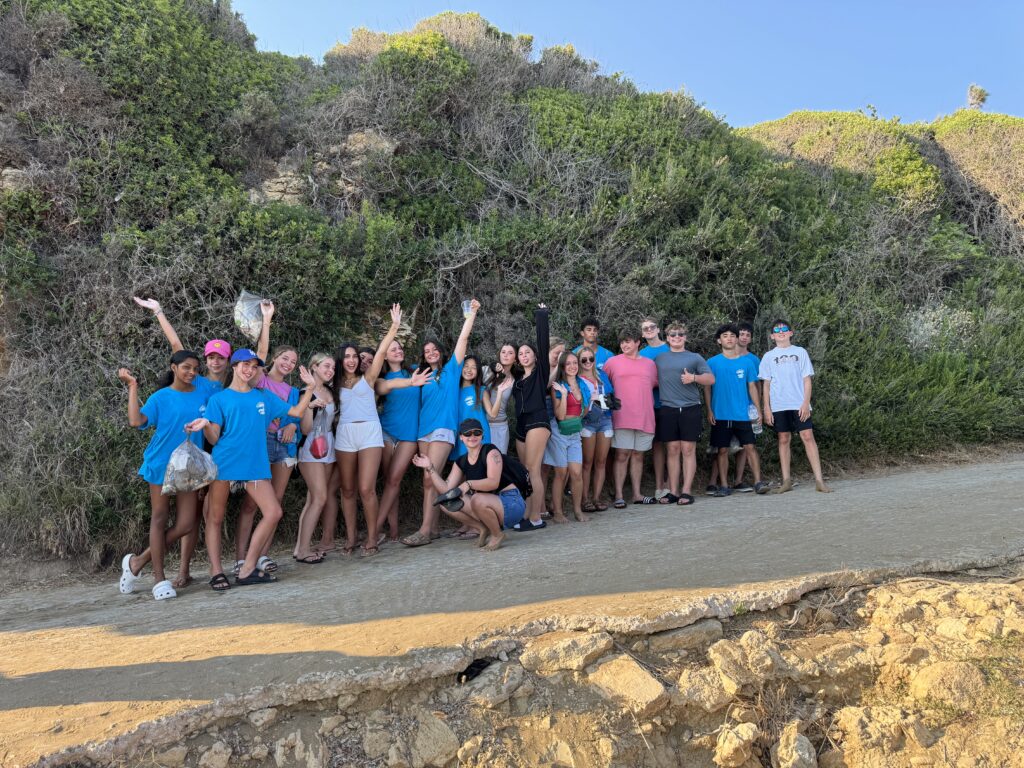

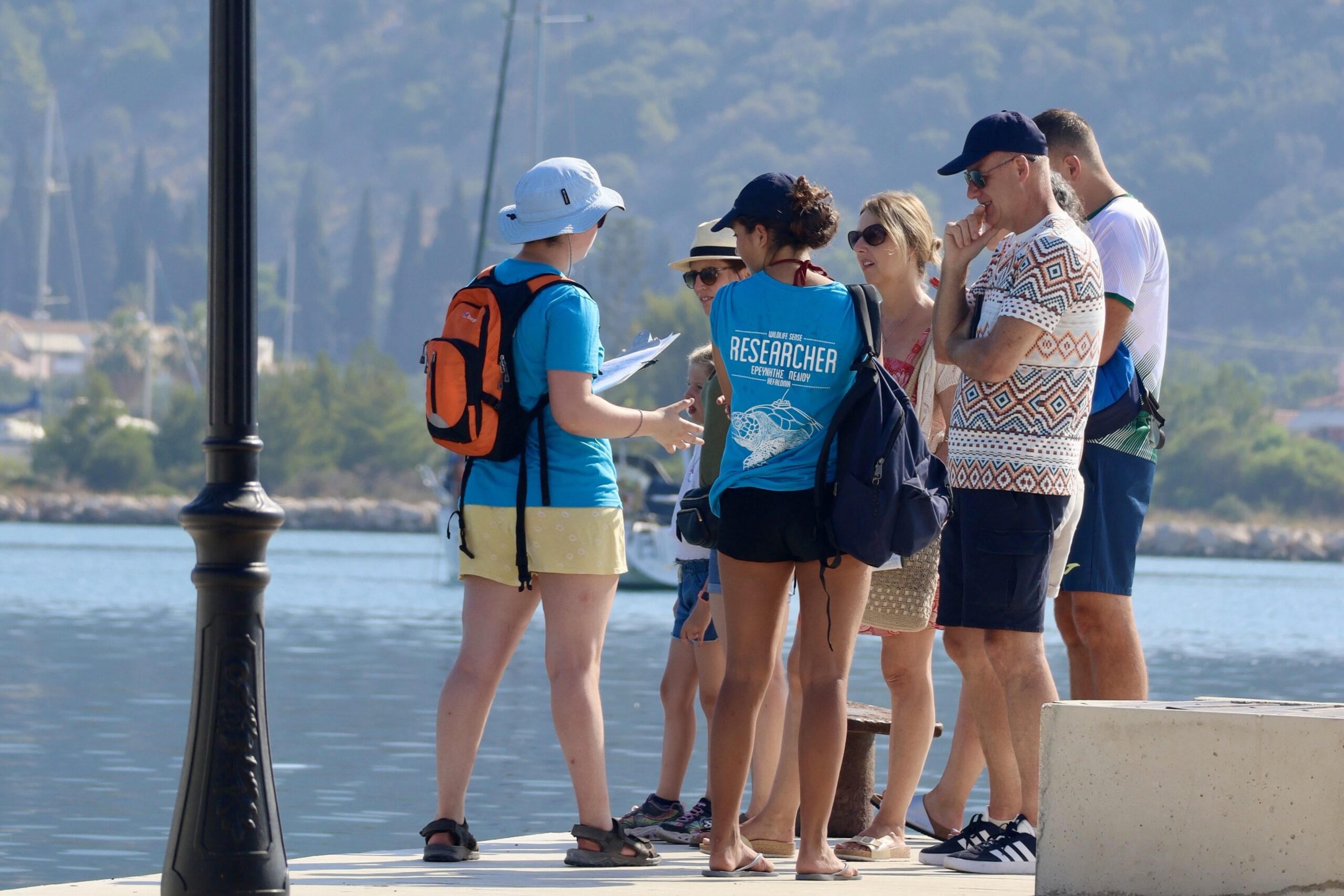

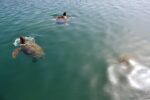
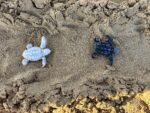
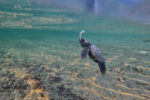
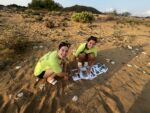
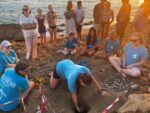
Well done you are making a great difference to turtles.
From tabitha aged ten